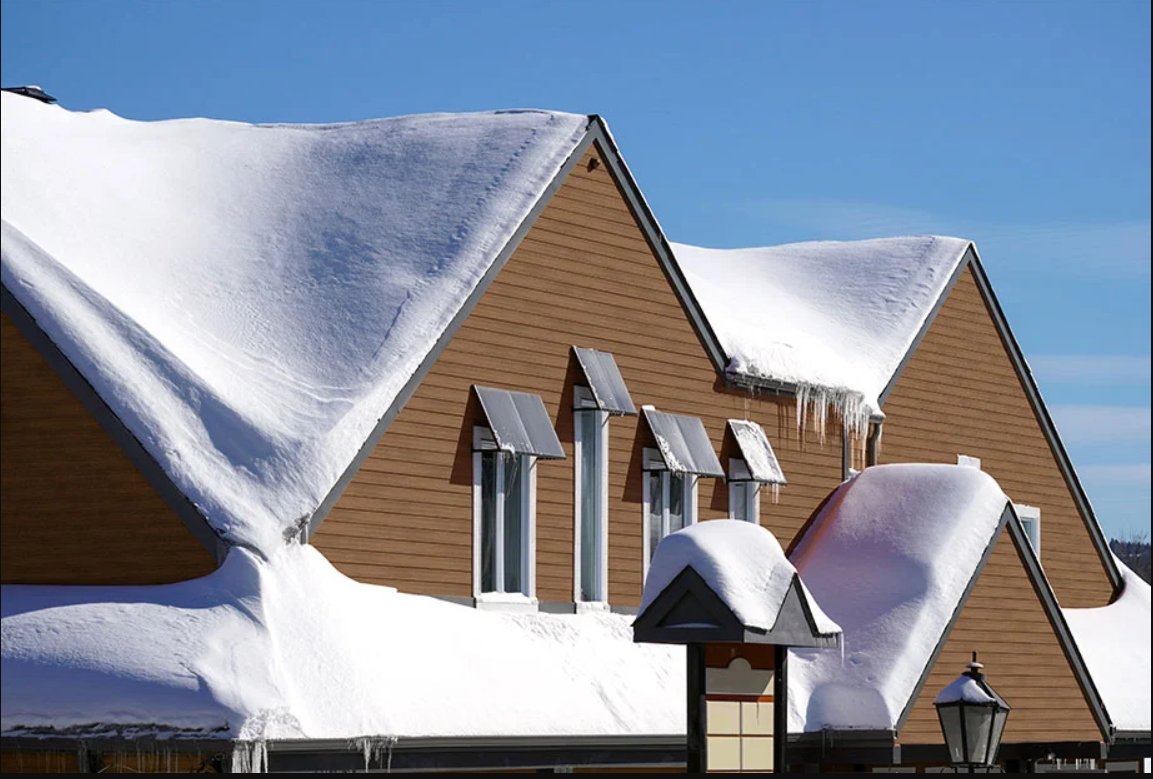PROPERTYSPARK ARTICLE
Composite Cladding: The Ultimate Weatherproof Solution
Imagine a home that stands strong, regardless of the weather. A home that’s stylish and resilient needs little to no maintenance. Sounds like a dream, doesn’t it? It’s more plausible. Enter composite cladding, your ultimate solution for weatherproofing.

Understanding Composite Cladding
While talking about resilient and low-maintenance homes, we stumbled upon composite cladding. It’s regarded as an ideal solution for weatherproofing, combining style with durability.
Composition and Manufacturing
How do we get composite cladding panels in our hands? It’s a riveting process involving the fusion of two core materials, commonly wood and plastic. These are heated and bonded, resulting in a strong, durable, and weather-resistant product.
Think of your favorite sandwich. In the same way, the materials, usually wood fibers and recycled plastics, are layered, pressed, heated, and finally shaped to form a solid board. The product? An elegant, sturdy, and extremely durable composite cladding, all set to brave the weather.
The choice of wood and plastic as main ingredients is common. Wood offers aesthetic charm, while plastic bestows durability and resistance. The result? Quality composite cladding panels full of character and able to withstand harsh weather conditions.
Remember the eco-friendliness of composite cladding. The use of recycled plastic cuts down on waste and advocates for a healthier environment.
The composite cladding manufacturing process is an excellent example of two separate elements complementing each other splendidly. However, the benefits continue! Let’s move further and peek into the advantages.
Advantages of Composite Cladding
Composite cladding, a harmonious blend of aesthetic charm and durability, bestows upon the buildings many advantages.
Low Maintenance
All composite materials have the major advantage of requiring little maintenance after installation.
It is not necessary to stain, treat, or paint composite cladding. It doesn’t need to be maintained to retain its innate resistance to rot and mold.
Because composite cladding contains plastic, which keeps bugs and other pests away, it is also insect-resistant. This implies that developing insect resistance doesn’t require any chemical treatment.
Additionally, because composite cladding panels have a high UV resistance rating, you don’t have to worry about them fading in the sun. This adds to the low maintenance of composite cladding because UV-resistant paints and stains don’t need to be applied.
The panels may fade very slightly during the first few months of their existence, but this is a typical process that will end quickly.
Composite cladding needs only periodic cleaning to be maintained. You can use a power washer or a soft bristle brush and warm, soapy water for this.
Composite cladding’s low care requirements will save you a lot of time and trouble over its lifetime and money.
Durability and Resistance
One of the primary perks of composite cladding is its hard-wearing nature. Crafted from a combination of wood and plastic, it serves as the defensive shield for your house – resisting the toughest weather conditions without compromising its aesthetic. From heavy rains to intense heat, composite cladding bravely endures it all! For instance, I remember receiving feedback from a client living in a storm-prone area who mentioned how his composite-clad home stood firm against a particularly destructive storm, emerging relatively unscathed. Can you believe it?
Statistics from the Department of Housing and Urban Development state that composite cladding boasts twice the lifespan of traditional timber siding, highlighting its superior durability.
Environmental Benefits
Besides being the pinnacle of durability, composite cladding is quite the environmentalist. Comprised largely of recycled elements, it contributes to reducing landfill waste. In today’s climate, where Mother Earth seems to be crying out for help, choosing earth-friendly materials—for example, composite cladding—can be our small step towards significant change.
Taking a leaf out of my book, I chose composite cladding specifically for this reason when I renovated my home a few years back. Not only did it provide the weather resistance I desperately needed, but it also made me feel good about my contribution to environmental conservation.
In addition to mitigating landfill waste, composite cladding also aids forest conservation efforts by reducing the demand for virgin timber. The United States Environmental Protection Agency confirms these environmental benefits, stating that composite cladding can save up to 12 billion tons of wood annually.
Composite cladding offers both durability and ecological benefits, substantiating its reputation as an ultimate solution for weather-proofing.
Weatherproofing Capabilities
I’d like to provide some insights on composite cladding and weatherproofing. Every structure’s exterior requires the best protection against varying climate conditions. Let’s delve deeper into composite cladding’s features, making it the leading pick for weatherproofing.
Moisture Management
In my years working, I’ve noticed that building materials susceptible to water damage incur higher maintenance costs. However, composite cladding is a game-changer.
Here’s what makes composite cladding brilliant in moisture management:
- Impenetrability: The denseness of composite cladding prevents water infiltration, thereby eliminating risks of water damage.
- Moisture Resistance: The combination of wood fibers and plastic makes it less prone to absorbing water, reducing the chances of mold growth.
- Durability: Composite cladding isn’t just about resisting water. It even withstands the corrosive effects of salts and acids.
Consider my experience with a beach house project to illustrate its water-resisting properties. Despite being exposed to ocean spray and humidity, the composite-clad building remains impeccably maintained years later.
Temperature Tolerance
Beyond dampness, composite cladding bravely tackles extremes of temperature, too. When it sizzles or freezes outside, composite cladding is an excellent barrier.
Here are some facts on composite cladding’s temperature tolerance:
- Resistance to Swelling and Shrinkage: Unlike traditional wood, composite cladding does not readily contract or expand with fluctuating temperatures, retaining its form and integrity all year round.
- Insulation: The thermal properties of composite cladding help maintain consistent indoor environments, translating to energy savings.
- Damage Control: Composite cladding shields the structure from sun damage and freezing cycles.
A memory highlighting this quality is a project I handled in a high-altitude location. The weather was as extreme as it gets, with scorching summers, heavy snowfall in winters, and drastic day-night temperature swings. The composite-clad structure, however, stays steadfastly comfortable regardless of the season.
Moisture management and temperature tolerance are key in weatherproofing. Composite cladding, with its impeccable capabilities, ticks both boxes, making it the ultimate choice.
Comparison with Other Siding Materials
I’ll dive straight into the subject matter.
Versus Vinyl Siding
Compared with vinyl siding, composite cladding’s advantages become even more apparent. First, composite cladding outperforms vinyl siding when it comes to temperature resilience. I remember a project I worked on where the vinyl siding distorted under extreme summer temperatures, but the composite cladding remained unscathed, demonstrating superior heat resistance.
Secondly, vinyl siding tends to crack and chip over time. Remember my neighbor’s house remodeling last spring? The newly installed vinyl siding looked shiny and promising, but hairline cracks had become visible to the naked eye by winter.
Lastly, let’s talk about moisture management. Vinyl siding traps water, which can lead to mold growth over time. I had a first-hand experience of this issue in my basement, where I originally used vinyl siding. Moisture build-up led to mold growth and eventually expensive remediation. On the contrary, composite cladding’s engineered design repels water effectively, keeping the underlying structure safe.
Let’s summarize these points in a table for easy comparison:
| Attribute | Composite Cladding | Vinyl Siding |
|---|---|---|
| Heat Resistance | Excellent | Moderate |
| Durability Over Time | High | Moderate |
| Moisture Management | Effective | Poor |
In retrospect, composite cladding’s superior performance makes it a coveted choice over vinyl siding for weatherproofing homes.
Conclusion
Composite cladding emerges as the ultimate weatherproof solution, offering a perfect blend of style, resilience, and low maintenance. Combining wood fibers and recycled plastics creates a durable, aesthetically pleasing barrier that stands up to the harshest weather conditions. Composite cladding resists moisture and temperature extremes and reduces environmental impact by utilizing recycled materials. Its superior durability to traditional vinyl siding ensures long-lasting protection with minimal upkeep. Composite cladding is the ideal choice for anyone looking to enhance their home’s exterior with a reliable, eco-friendly, and visually appealing solution.
Learn how to Become a Top Agent with the Guaranteed 5 Min/Week System
No social media experience needed
Free webinar seat (limited quantities)
Learn the guaranteed 5 min/week system
Become a social media superstar
Constantly get new leads
Beat the competition
Get a special webinar deal
This Agent Tripled His Commissions Just With Social Media
Learn how this real estate agent tripled his commissions just with social media and how you too can become a social media superstar.
Why You Can’t Just “Boost” Your Real Estate Listing
That big blue button has tempted you before right? You want to Facebook Boost your Real Estate listing. Find out why you shouldn’t!
How Much Should Realtors Spend On Social Media
A question we get often from Realtors is “how much should I spend on social media?” Find out exactly how much to spend and how to spend it without getting ripped off!



